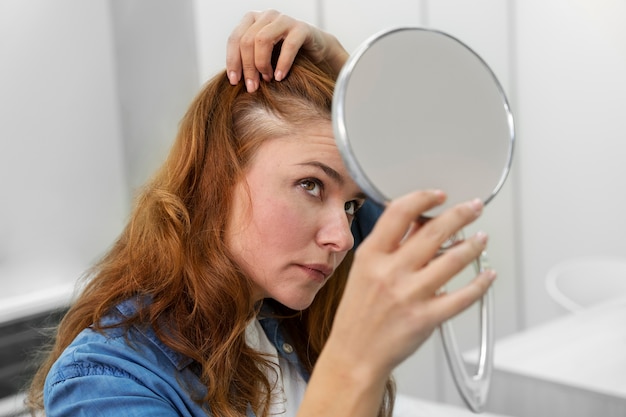
Introduction
In the realm of human biology, anomalies often leave us astounded. One such anomaly is the phenomenon of a birthmark growing hair. These unique occurrences have puzzled scientists and fascinated individuals for generations. In this article, we will delve into the intriguing world of birthmarks that sprout hair, exploring their causes, types, and whether they are a cause for concern.
The Wonder of Birthmarks
Birthmarks have intrigued humanity for centuries. These colorful marks, often present at birth or appearing shortly after, come in various shapes and sizes. While most birthmarks are benign, some can surprise us by doing the unexpected – growing hair.
What Causes Hair Growth in Birthmarks?
Understanding the underlying mechanisms of hair growth in birthmarks is crucial to demystifying this phenomenon. Scientists believe that it is primarily related to genetic factors. Certain genes may trigger the development of hair follicles within or around the birthmark.
The Different Types of Hair-Growing Birthmarks
Not all birthmarks are created equal, and this holds true for those that produce hair. Let’s explore the various types of these unique birthmarks:
1. Nevus Pilosus
Nevus Pilosus, also known as a “hair nevus,” is perhaps the most well-known type of hair-growing birthmark. These birthmarks are characterized by a patch of hair, often dark and coarse, emerging from the skin.
2. Congenital Melanocytic Nevi
Some birthmarks called Congenital Melanocytic Nevi can also exhibit hair growth. These birthmarks are often larger and have a distinct dark coloration.
3. Becker’s Nevus
Becker’s Nevus is another variant that can develop hair. Typically found on the shoulders or upper torso, they may be associated with hormonal changes, leading to increased hair growth during puberty.
Are Hair-Growing Birthmarks Harmful?
The presence of hair in birthmarks usually does not pose any health risks. However, some individuals may experience psychological distress due to their appearance. It’s essential to consult a dermatologist for advice on managing or removing these birthmarks if desired.
Treatments and Removal Options
For those seeking to remove or reduce the appearance of hair-growing birthmarks, several options are available. These include laser therapy, surgical excision, and topical treatments. The choice of treatment depends on factors such as the type and location of the birthmark.
Conclusion
In the tapestry of human existence, birthmarks have long been regarded as unique marks of identity. When they exhibit the remarkable trait of growing hair, it adds another layer of intrigue to their existence. While these birthmarks are generally harmless, seeking professional advice is always a prudent choice. Embrace your uniqueness, for it is the diversity of life that makes it truly extraordinary.
FAQs
1. Can hair-generating birthmarks change over time?
Yes, these birthmarks can change in appearance over time, particularly during puberty when hormonal changes may lead to increased hair growth.
2. Are hair-growing birthmarks hereditary?
There is a genetic component to the development of hair-growing birthmarks, but they are not always inherited directly.
3. Are there any risks associated with removing hair-growing birthmarks?
The removal of these birthmarks carries some risks, such as scarring or changes in skin pigmentation. It’s essential to discuss potential risks with a dermatologist.
4. Can hair-generating birthmarks be a sign of an underlying medical condition?
In most cases, hair-generating birthmarks are benign and not indicative of an underlying medical condition. However, it’s always advisable to consult a medical professional for an accurate assessment.
5. Is it common for hair-growing birthmarks to disappear on their own?
Hair-growing birthmarks typically do not disappear spontaneously. If you wish to remove or reduce their appearance, consult a dermatologist for appropriate treatment options.
